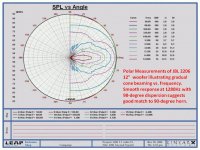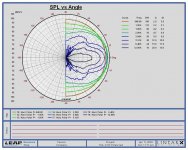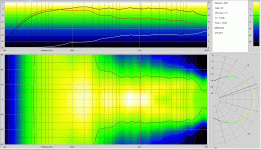The reason for the THX 80Hz frequency spec is that you can't remotely locate your sub at a higher frequency and not notice that the sub isn't in front of you. My experience is that even 80Hz is too high. I prefer 70Hz for the crossover frequency if I'm going to position my sub(s) away from the front sound stage, even with fairly steep slopes.
No i'm sorry, from my experience this is not true. Even much lower content in frequancy can be directional. If you have the possibility to check outdoor with a big PA system you'll be surprised how directive it can be so low.
Dolby's choice about THX fc for surround is more or less arbitrary because as LineSource pointed some studys pointed that most listeners could not locate... blablablabla, it was said too that phase or distortion is not easily audible for bass contents: from my experience this is not true too. But that's not the point here: as you have your sub facing you use them up to the max of theyr spec and hear by yourself what you'll gain or not. At the end this is your taste which matters. But use your mic and check for distortion and all... and don't make claims which are impossible! 😉
I haven't really even heard a good reason I would want to cross over higher than the normal 70 or 80 Hz max. Just some vague statements about "cleaning up the midrange". I'm not convinced that crossing over at 70Hz instead of 100Hz will make my midrange dirty to begin with.
I'm willing to be convinced of that but so far I've just seen a couple opinions.
Mark explained that most of the energy of 'bass contents' is located in the range approximately 50/200hz (i expanded it a little bit 🙂 ). There's little energy 'average' below 50hz (but you've got some peaks which require high energy: powerfull amps and efficients speakers). I do think their is a lot of infos about rooms (acoustics from recording space) too in this range but they are low level and not what will ask about power.
Most of the bass contents (fundamentals and first harmonics of instruments) are located between 80 and 150hz. If you release your mid from this info eveything clean up that's a fact. But you'll try by yourself and make your own conclusion about that. 😉
Last edited:
Like I said, going in circles. You're now telling me that what I hear in my car every day and what I heard for the five years I had a DIY home theater in my house is not true. That my 15 years of listening to music with subwoofers hasn't really shown me that I prefer 70Hz as the crossover point, unless the sub is in front of me.
I have no doubt that the vast majority of pro 12" mid bass drivers do not handle below 100Hz very well. So crossing them over down at 70Hz would probably sound noticeably bad. Especially if you also ask the same driver to reproduce 1500Hz or even higher. But that's not what I'm doing here.
I have no doubt that the vast majority of pro 12" mid bass drivers do not handle below 100Hz very well. So crossing them over down at 70Hz would probably sound noticeably bad. Especially if you also ask the same driver to reproduce 1500Hz or even higher. But that's not what I'm doing here.
You're now telling me that what I hear in my car every day and what I heard for the five years I had a DIY home theater in my house is not true. That my 15 years of listening to music with subwoofers hasn't really shown me that I prefer 70Hz as the crossover point, unless the sub is in front of me.
I'm not telling you what you hear, it's not fair and never was my point.
I'm telling you should investigate using measurement what you hear (and like) and don't let your ear/brain fools you, only measurement could inform you about what is really happening.
Your taste your choice Chris, as i told you more than once go listen to many possible system find the one you like and inspire you to do what you want.
But please don't compare a car audio environnment, an home theater and a music system ( the last two could be compared in a way but this is differents needs in the end). If you feel i can't give you more useful infos that's ok for me.
But keep reading keep asking and keep us informed of your progress.
Mark, you were trying to market high XMax 6.5" and 8" midbass drivers to the mobile audio DIY community recently. I've been a member over on diymobileaudio.com for a few years now.
Over there you were claiming your drivers were suitable for low bass frequencies all the way up to 800Hz or so. So they weren't actually very good at anything above 150Hz?
Over there you were claiming your drivers were suitable for low bass frequencies all the way up to 800Hz or so. So they weren't actually very good at anything above 150Hz?
Like I said, going in circles. You're now telling me that what I hear in my car every day and what I heard for the five years I had a DIY home theater in my house is not true. That my 15 years of listening to music with subwoofers hasn't really shown me that I prefer 70Hz as the crossover point, unless the sub is in front of me.
I have no doubt that the vast majority of pro 12" mid bass drivers do not handle below 100Hz very well. So crossing them over down at 70Hz would probably sound noticeably bad. Especially if you also ask the same driver to reproduce 1500Hz or even higher. But that's not what I'm doing here.
And you have experience with these drivers?
Just like you have experience with a different method of using subwoofers?
Come on.
Your starting to sound like Anthony now.
This is not a square peg in a round hole situation.
It's people that do this for a living giving you some free consulting.
WHat works in a car is not exactly what works in any other environment.
In a car you are in the near field. Always. And actually the bass is defined as in the pressure feed as there is no automobile that has any chance of reproducing bass at the correct wavelength.
Like Remi, I have no interest in trying to convince you of anything.
Look at the facts.
Please don't hold onto what you know as if there is nothing else to be known.
Mark, you were trying to market high XMax 6.5" and 8" midbass drivers to the mobile audio DIY community recently. I've been a member over on diymobileaudio.com for a few years now.
Over there you were claiming your drivers were suitable for low bass frequencies all the way up to 800Hz or so. So they weren't actually very good at anything above 150Hz?
I'll give you an answer.
Every driver has a point where it ceases to be a hemispherical source of sound. This changes with a number of things, driver diameter being one of them.
It's called the piston range.
Every driver has a different range where this is the case.
The number you are quoting roughly fits the 8 inch driver I have.
Mark has a couple drivers he designed, I believe using the same motor as my old Adire Audio subs, and with an XMax basically the same as these subs. ~14mm one way.
On the other forum he claims his 8" driver will play sub bass frequencies but will also work well up to about 800Hz. I'm just trying to reconcile that with the statements in this thread about needing to off load frequencies below 150Hz to clean up the higher frequencies.
EDIT: To be clear, I believe using the same motor as my subs is a positive thing.
On the other forum he claims his 8" driver will play sub bass frequencies but will also work well up to about 800Hz. I'm just trying to reconcile that with the statements in this thread about needing to off load frequencies below 150Hz to clean up the higher frequencies.
EDIT: To be clear, I believe using the same motor as my subs is a positive thing.
Mark has a couple drivers he designed, I believe using the same motor as my old Adire Audio subs, and with an XMax basically the same as these subs. ~14mm one way.
On the other forum he claims his 8" driver will play sub bass frequencies but will also work well up to about 800Hz. I'm just trying to reconcile that with the statements in this thread about needing to off load frequencies below 150Hz to clean up the higher frequencies.
EDIT: To be clear, I believe using the same motor as my subs is a positive thing.
Not even slightly the same.
Interesting idea.
But no.
The closest thing that I have made to anything fro maudire is an improved 6.5.
Again very different from the Audire Extremis.
I had one that I was to work from and we turned out a totally different motor design.
The only thing in common was the split gap idea.
The coils are different as is the motor design.
My work is original. What I have is permission from Dan Wiggins to use the XBL motor topology. And that is where his involvement stops.
Back to the basics once again.
Can a single driver produce both bass and midrange?
Of course it can!
Ever hear of wideband or full range drivers?
Have you listened to any?
If you listen to headphones you have for sure.
A swept volume versus produced sound pressure level calculation will tell you that the drivers I design have a very good low end capability. For their size.
But in the context of this discussion as applied by me. What is the point I am trying to bring the horse to the water trough for?
Why do you think that I have pointed you in the direction of a high quality midwoofer?
Because segmenting the audio signal at the correct points leads to a much cleaner signal reproduction within those passbands. It is very noticeable when you have heard it done properly.
The human voice range, from about 300 hertz up to the mid to high 2000's is best served by a single driver if you can set this up.
This is one of the reasons why in the example of loudspeaker design that I showed you I used a 5 inch driver. A good 5 inch driver in the quantity I used is ideally suited to that range and the complement of drivers provide both the useful volume displacement and the efficiency to reproduce just about any signal sent to the speaker.
I have been playing in this audio sandbox for quite a while.
So think a bit.
I'll throw you an even more extreme example of driver producing low bass.
ELAC made a tweeter used by the measurement microphone company B&K.
They used the tweeter to measure the bass response of the microphones all the way down to 10 hertz.
It was not loud. But it was very, very clean. As in low distortion.
In a properly sized chamber it was very effective and plenty loud enough to set up instrumentation to verify operation of the microphones.
Microphone calibrators are of similar simpler design.
Small diaphragm and small coupling cavity.
I think I'm going to step back from this project for a while. I'm not enjoying it right now and haven't learned anything new from the last couple pages.
I'm going to order a pair of the RS270 10" woofers, or something very similar, and build a couple single driver enclosures to listen to and experiment with for a while. I know I can use them for something else later so it won't be money wasted.
Not sure when I may get back around to this larger project.
-Chris
I'm going to order a pair of the RS270 10" woofers, or something very similar, and build a couple single driver enclosures to listen to and experiment with for a while. I know I can use them for something else later so it won't be money wasted.
Not sure when I may get back around to this larger project.
-Chris
Epilog: For those following the controlled directivity ideas in this thread as a solution to reduce the amount of short-delay room reflections that garble the high frequency location information, I attached the Polar Measurements of JBL 2206 12” woofer illustrating the gradual cone beaming vs. frequency. Smooth response at 1280Hz with 98-degree dispersion suggests good match to 90-degree horn. A higher frequency crossover for this 12" speaker will generate irregular, distorted SPLs. A lower frequency crossover for this 12" speaker will generate a wider 180-degree(2-Pi) polar pattern, down to where the wavelength is longer than the baffle width. If a 1000Hz crossover is desired, a wider polar pattern horn could be used, or a larger diameter midbass with the proper 90degrees at 1000Hz polar pattern can be used.
One good picture is often better than fuzzy descriptions.
--JBL 2123H polar for 10" midbass illustrates potential for 1.8Khz @ 90-degrees
--Geddes directivity pattern of his 15" OS waveguide crossed at 1000Hz to a 15" midbass.... just add 60-80Hz woofers.
One good picture is often better than fuzzy descriptions.
--JBL 2123H polar for 10" midbass illustrates potential for 1.8Khz @ 90-degrees
--Geddes directivity pattern of his 15" OS waveguide crossed at 1000Hz to a 15" midbass.... just add 60-80Hz woofers.
Attachments
Thanks for the polars.
I use my 2206 with a xover frequency of 1 kHz crossing over to a 2344 horn (+-100deg). This polar diagram shows that an xover frequency of 1300 Hz would give a smoother polar response of the complete speaker. And the phase equaliser would also need fewer stages. OTOH FM distortion would probably be higher.
Regards
Charles
I use my 2206 with a xover frequency of 1 kHz crossing over to a 2344 horn (+-100deg). This polar diagram shows that an xover frequency of 1300 Hz would give a smoother polar response of the complete speaker. And the phase equaliser would also need fewer stages. OTOH FM distortion would probably be higher.
Regards
Charles
Last edited:
I did end up ordering a pair of Dayton RS270 10" woofers to play with.
Also decided to go with another pro amp for my mid bass. I bought a Crown XLS1002 to power my subs but I wanted something with a little better specs for the mid bass so I bought a QSC GX3.
All that arrived Tuesday but I haven't had time to do more than take the amp out of the box and look at it.
Once I separate my midrange and treble into two channels I'll get a couple nicer stereo amps or a nice 4 channel, if there is such a thing. For now I'm using an old Harman Kardon AVR55 receiver. It has jumpers on the back you can remove and plug straight into the main stereo amp channels. Bypasses everything in the receiver including the volume control but it sounds pretty good.
After spending a couple evenings reading the manual I decided to buy Sound Easy. Got the software and key today and installed it but haven't done anything other than make sure it will run. Who knows how long it will take me to really learn the program but it doesn't look nearly as overwhelming as the comments on Parts Express would make you believe.
-Chris
Also decided to go with another pro amp for my mid bass. I bought a Crown XLS1002 to power my subs but I wanted something with a little better specs for the mid bass so I bought a QSC GX3.
All that arrived Tuesday but I haven't had time to do more than take the amp out of the box and look at it.
Once I separate my midrange and treble into two channels I'll get a couple nicer stereo amps or a nice 4 channel, if there is such a thing. For now I'm using an old Harman Kardon AVR55 receiver. It has jumpers on the back you can remove and plug straight into the main stereo amp channels. Bypasses everything in the receiver including the volume control but it sounds pretty good.
After spending a couple evenings reading the manual I decided to buy Sound Easy. Got the software and key today and installed it but haven't done anything other than make sure it will run. Who knows how long it will take me to really learn the program but it doesn't look nearly as overwhelming as the comments on Parts Express would make you believe.
-Chris
Here's the simple enclosure I designed for the woofers. Should be right about 1.4 cubic feet net, which is what Parts Express recommends. Pretty sure I'll end up throwing the enclosures away down the road but they should work well for learning, I think.
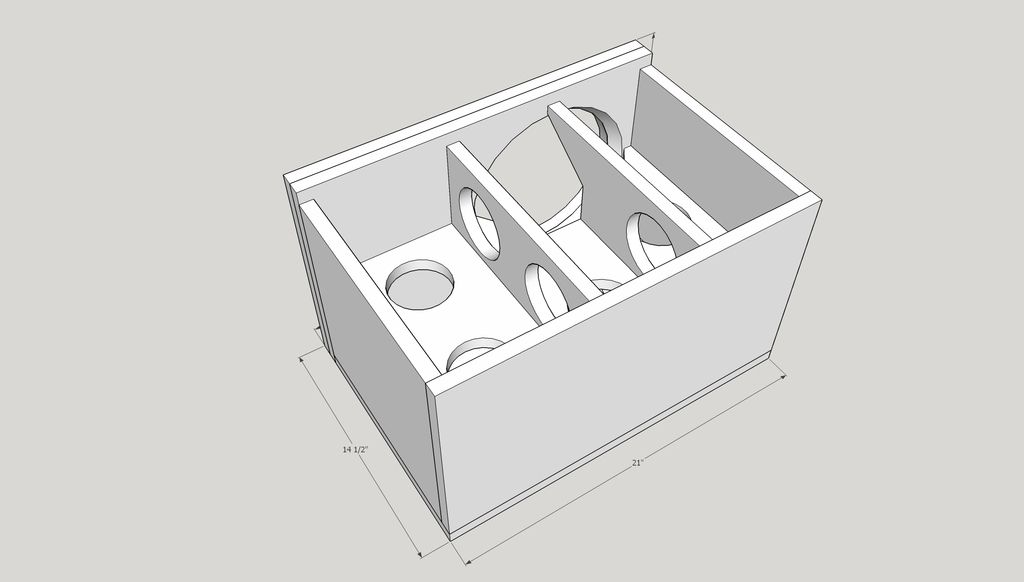
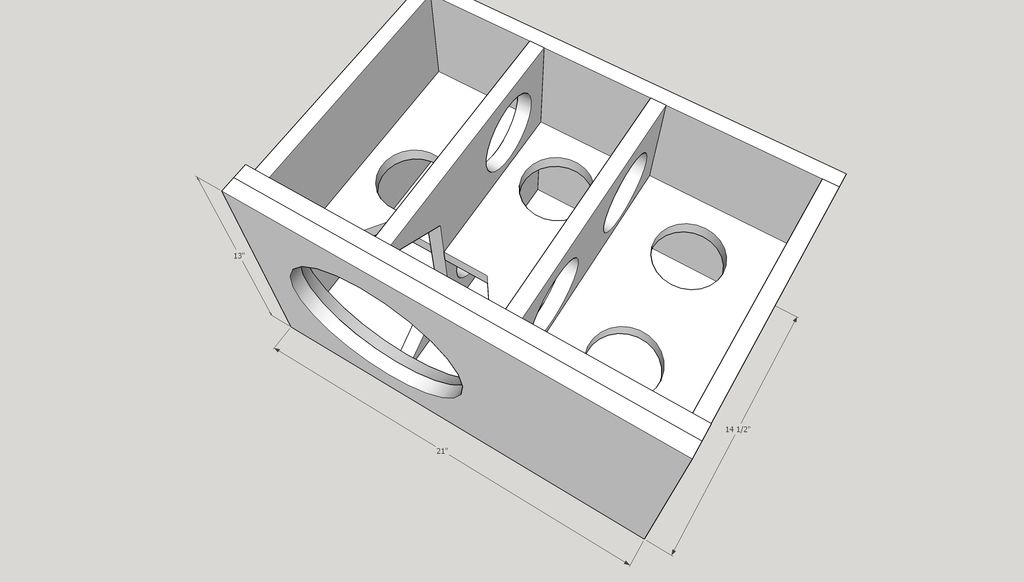
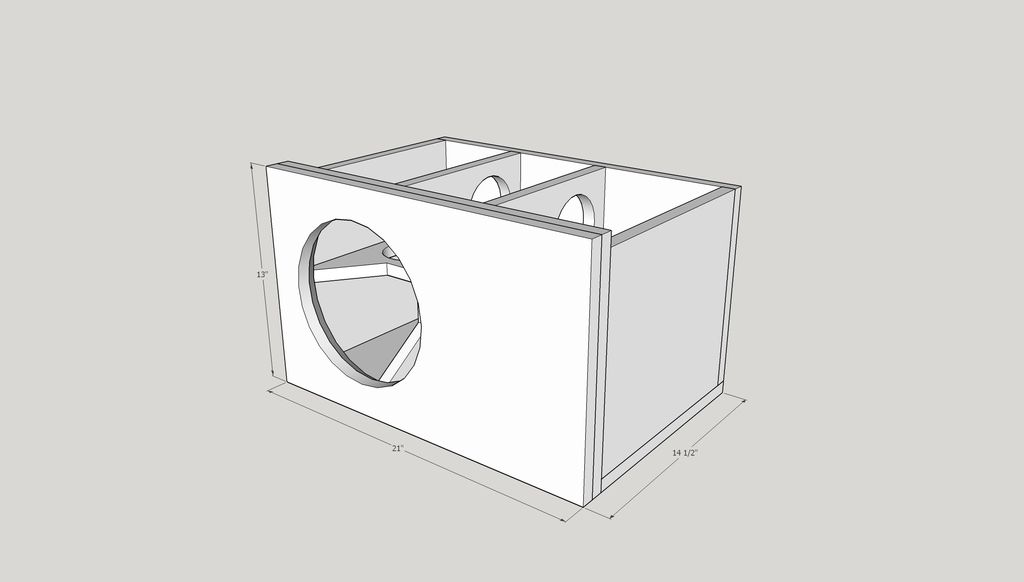



Last edited:
Making progress on my enclosures.
All the pieces were cut to size over the weekend. Got the baffles cut and laminated.
Most of the holes are rough cut into the internal braces, but the stupid chuck keeps slipping off the arbor of my cheap drill press when I try to use my 4" hole saw. I may have to use the jigsaw for the last few 4" holes.
Need to round-over and smooth the internal brace holes and bevel the back edge of the baffle cutouts then I'm ready for assembly.
Hoping to have them ready for listening by the end of this weekend.
-Chris
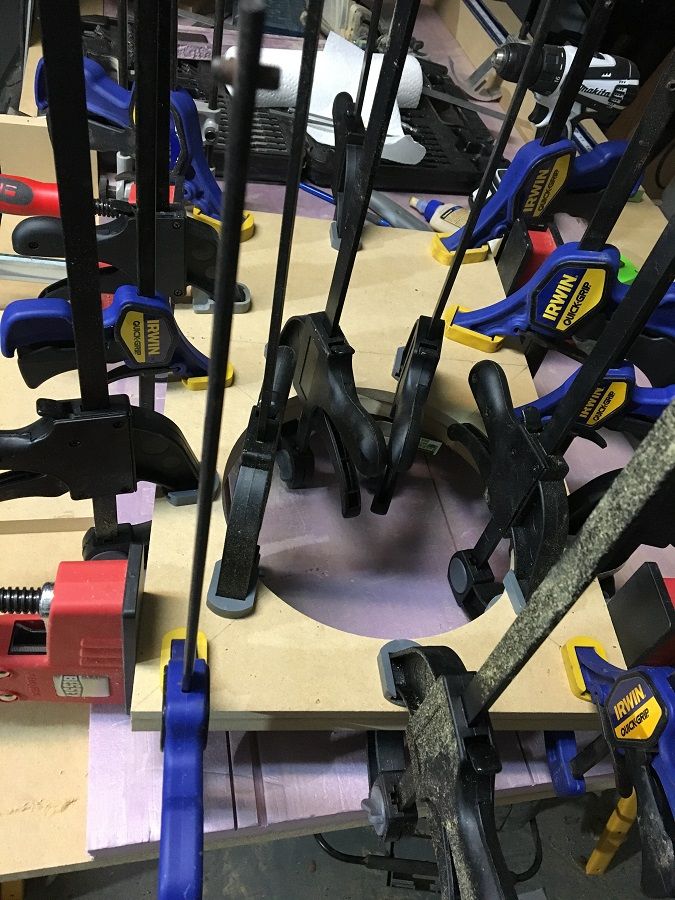
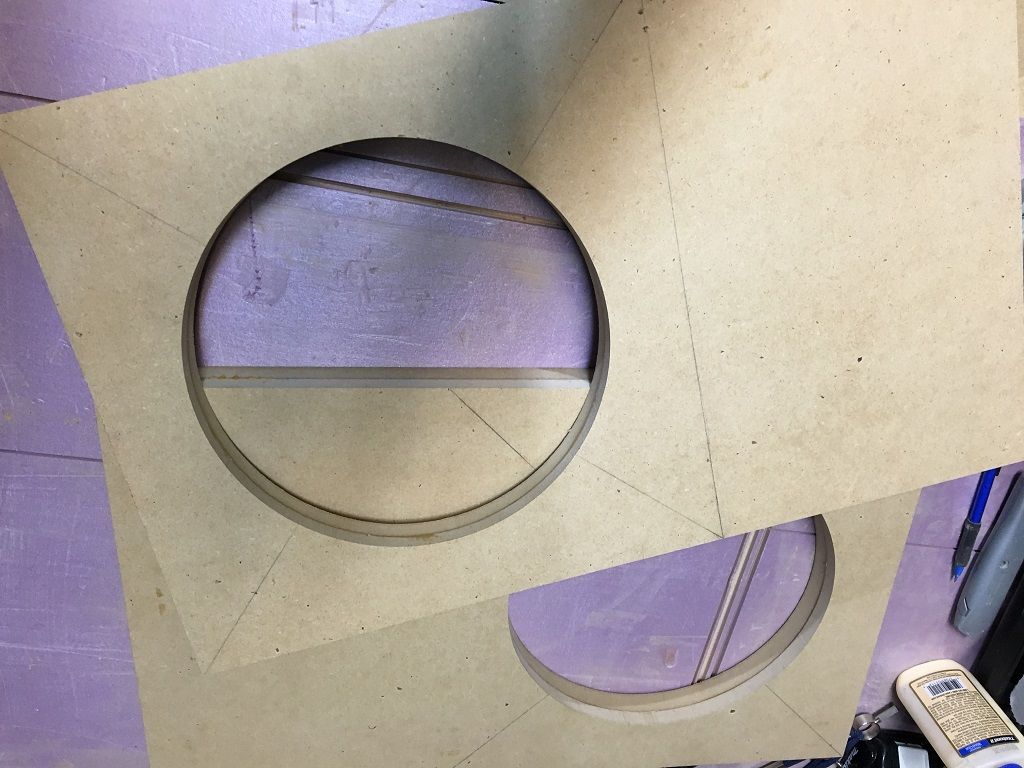
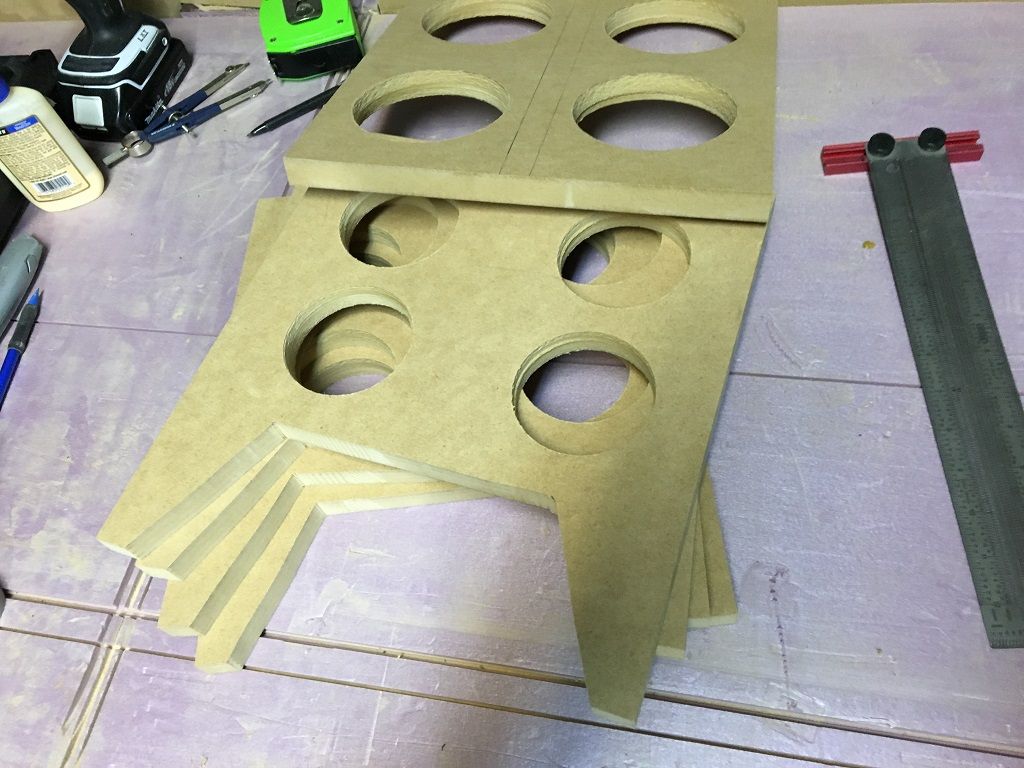
All the pieces were cut to size over the weekend. Got the baffles cut and laminated.
Most of the holes are rough cut into the internal braces, but the stupid chuck keeps slipping off the arbor of my cheap drill press when I try to use my 4" hole saw. I may have to use the jigsaw for the last few 4" holes.
Need to round-over and smooth the internal brace holes and bevel the back edge of the baffle cutouts then I'm ready for assembly.
Hoping to have them ready for listening by the end of this weekend.
-Chris



Didn't get as much done over the weekend as I hoped but I spent a little more time on these last night and tonight. Getting really close. Glued the baffle to one this evening.
I used regular wood glue for the outer shell and it was pretty air tight but I ran a bead of urethane construction adhesive around the inner joints to be double sure. Same stuff I used to glue in the braces and the baffle. Made a mess though.
-Chris

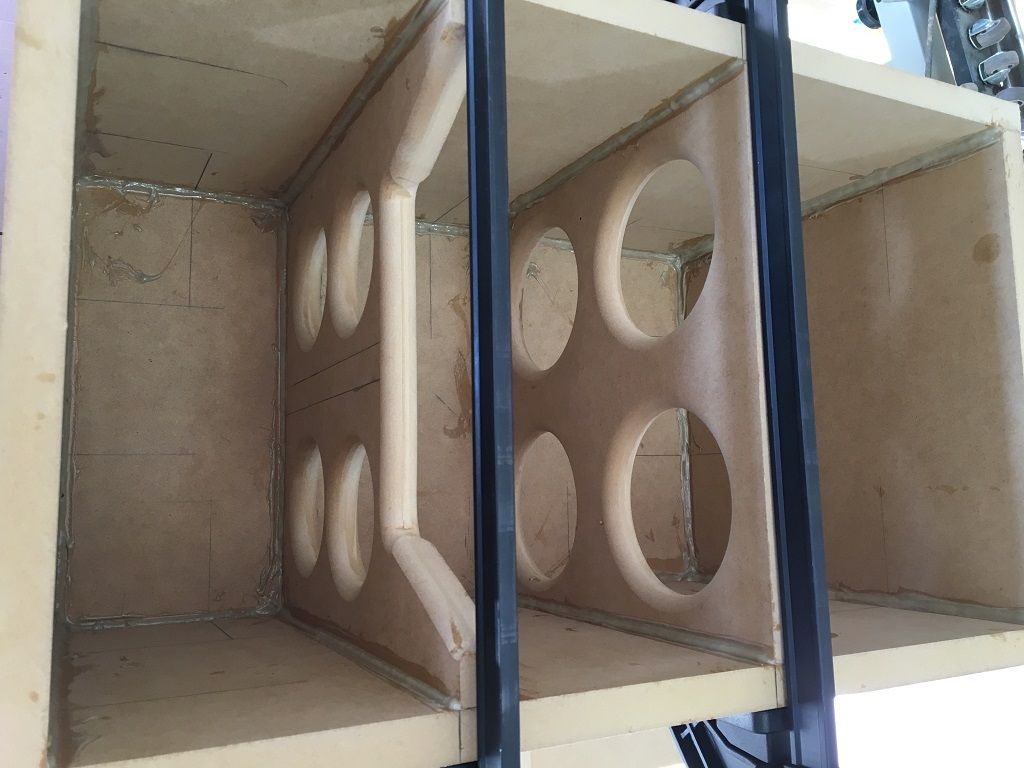
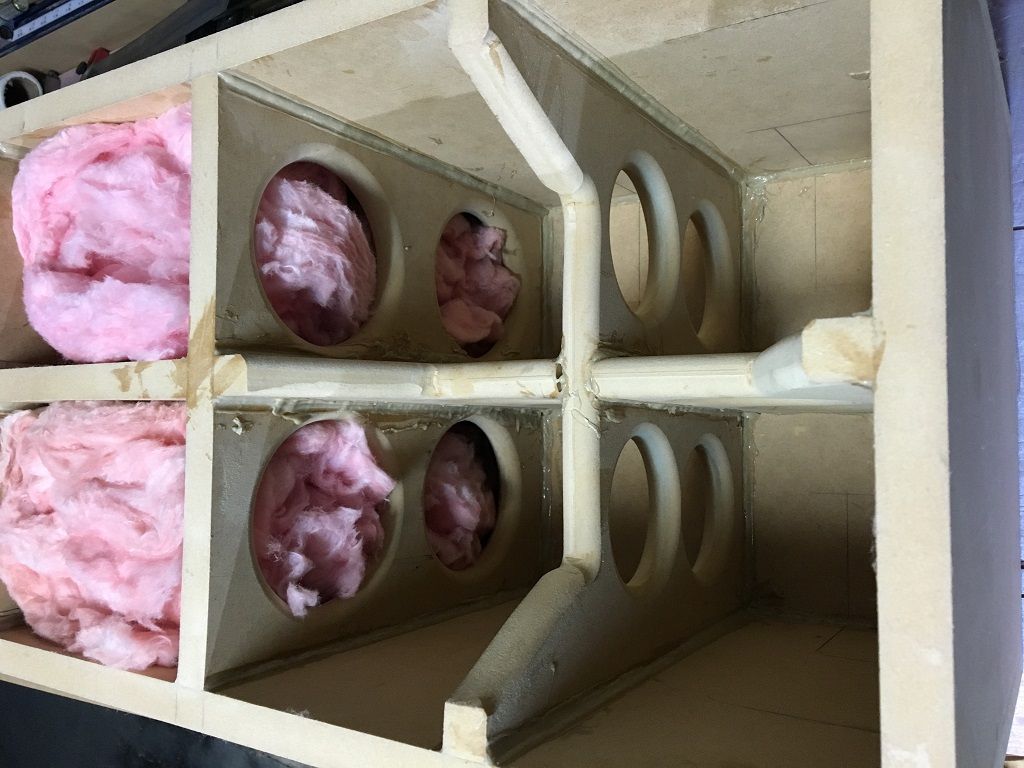
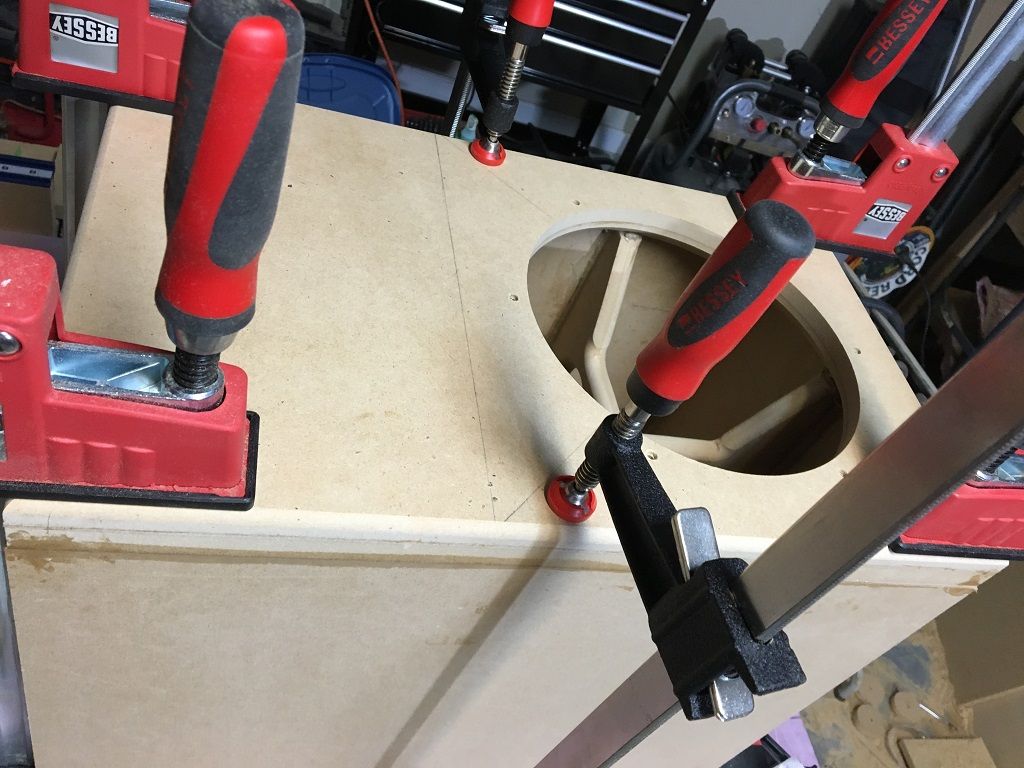
I used regular wood glue for the outer shell and it was pretty air tight but I ran a bead of urethane construction adhesive around the inner joints to be double sure. Same stuff I used to glue in the braces and the baffle. Made a mess though.
-Chris




- Status
- Not open for further replies.
- Home
- Loudspeakers
- Multi-Way
- My attempt at 4-way digital active
